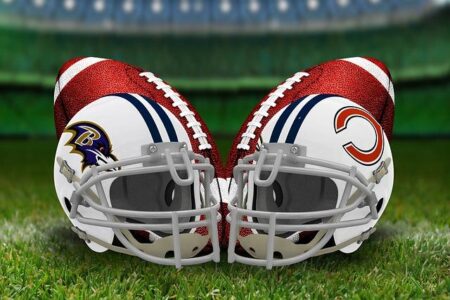Chicago’s Sports Stadiums: Navigating the Future of Iconic Venues
Chicago’s storied sports tradition is entering a transformative phase as plans for its major stadiums take shape. With discussions ranging from extensive renovations to brand-new constructions, the city’s sports infrastructure is at a pivotal moment. These developments are influenced by financial feasibility,community welfare,and the ambition to maintain world-class facilities. This article explores the current status of stadium projects for Chicago’s premier baseball, football, and soccer teams, highlighting what these changes mean for the city’s sports culture and urban landscape.
Chicago Bears: Critical Decisions on Funding and Location Shape Stadium Prospects
The Chicago Bears stand at a significant juncture as they deliberate over funding strategies and site selection for their next stadium. Securing approximately $2 billion for a cutting-edge facility involves complex negotiations among city leaders, private investors, and team ownership. The Bears are committed to choosing a location that optimizes fan convenience, economic benefits, and community enhancement, yet consensus on the ideal site remains elusive amid competing proposals.
Primary Considerations in the Bears’ Stadium Planning
- Financial Backing: A blend of public funds, private capital, and lucrative naming rights agreements.
- Potential Sites: Options include redeveloping the historic Soldier Field, constructing a new stadium downtown, or situating the venue in a suburban area outside Chicago’s city limits.
- Community Effects: Assessing impacts on traffic patterns,economic revitalization,and neighborhood disruption.
| Proposed Location | Projected Cost | Advantages | Drawbacks |
|---|---|---|---|
| Soldier Field Redevelopment | $1.8 Billion | Historic significance, central urban location | Limited space for expansion, costly renovations |
| New Downtown Stadium | $2.2 Billion | Contemporary design, potential economic boost | Expensive land acquisition, increased traffic congestion |
| Suburban Site | $1.9 Billion | Ample room for growth, abundant parking | Farther from city center, possible fan opposition |
White Sox and Cubs: Balancing Renovation Versus New Stadium Construction
The Chicago White Sox and Cubs are carefully evaluating whether to modernize their existing ballparks or invest in entirely new stadiums. This decision weighs the preservation of historic charm against the advantages of cutting-edge facilities, with a focus on enhancing fan experience and stimulating local economies.
Team-Specific Approaches
- White Sox: Considering upgrades to Guaranteed Rate Field that incorporate advanced technology and improved seating comfort.
- Cubs: Exploring ways to retrofit Wrigley Field to enhance amenities while maintaining its iconic character.
- Community Focus: Both franchises prioritize developments that support neighborhood businesses and foster community engagement.
| Factor | Renovation | New Construction |
|---|---|---|
| Initial Cost | Lower upfront, with potential unforeseen expenses | Higher initial outlay, but greater long-term control |
| Project Duration | Shorter, with phased implementation possible | Longer, requiring extensive planning and construction |
| Fan Experience | Gradual improvements | Comprehensive modern amenities |
| Past Preservation | Maintains legacy elements | Creates new identity, less historical continuity |
| Economic Impact | Focus on revitalizing existing areas | Potential to develop new commercial districts |
Stadium Projects’ Influence on Neighborhoods and Economic Growth
Beyond sports, Chicago’s stadium initiatives are catalysts for community transformation.These venues generate thousands of jobs, increase revenue for local businesses, and improve public infrastructure. Enhanced transit options and upgraded public spaces around stadiums contribute to residents’ quality of life. However, concerns about displacement and rising housing costs remain challenges that require careful management.
Economic data underscores the significance of these venues:
| Venue | Annual Attendance (Millions) | Jobs Supported | Estimated Economic Impact ($ Millions) |
|---|---|---|---|
| Soldier Field | 2.5 | 3,000 | 150 |
| United Center | 3.2 | 4,500 | 210 |
| Wintrust Arena | 0.8 | 1,200 | 75 |
Stakeholders emphasize inclusive planning to ensure stadium benefits extend to all community members.Initiatives include affordable housing near stadium districts, support for minority-owned enterprises, and active community engagement to foster equitable growth. As Chicago’s sports franchises advance their stadium plans, prioritizing enduring and inclusive development remains essential for vibrant neighborhoods and economic resilience.
Advocating for Obvious Public Involvement and Sustainable Infrastructure Investment
Urban planners and sports economists stress the necessity of transparent interaction and active public participation throughout stadium development. Open dialogues, clear financial reporting, and accessible project timelines build trust and encourage community support, which are critical for project success.
Effective Public Engagement Practices
- Consistent town hall meetings with defined agendas
- Detailed disclosure of funding sources and expenditures
- Interactive digital platforms for ongoing community feedback
- Inclusion of local business representatives in planning processes
Concurrently, long-term investments in stadium infrastructure are vital to accommodate technological advancements and evolving fan expectations. Incorporating smart technologies, renewable energy solutions, and enhanced transportation access not only elevates the game-day experience but also aligns with Chicago’s environmental and urban development goals. The following projections highlight investment trends in major league stadiums over the next decade:
| Focus Area | Projected Investment (2024-2034) | Anticipated Benefits |
|---|---|---|
| Smart Technology Integration | $120 Million | Improved fan interaction and security measures |
| Renewable Energy Systems | $85 Million | Lower carbon emissions and operational costs |
| Transit and Parking Enhancements | $60 Million | Better accessibility and reduced congestion |
Conclusion: Shaping Chicago’s Sports Venue Landscape for the Future
As Chicago’s sports teams deliberate their stadium futures, the forthcoming decisions will profoundly influence the city’s athletic and urban environment for years to come. Whether through renovation or new construction, each franchise faces distinct challenges and opportunities that mirror broader trends in sports facility development. Staying abreast of these evolving projects is essential for fans, policymakers, and community members as Chicago prepares to enter a new chapter in its major league sports history. Ongoing coverage will continue to provide updates on these dynamic developments.





